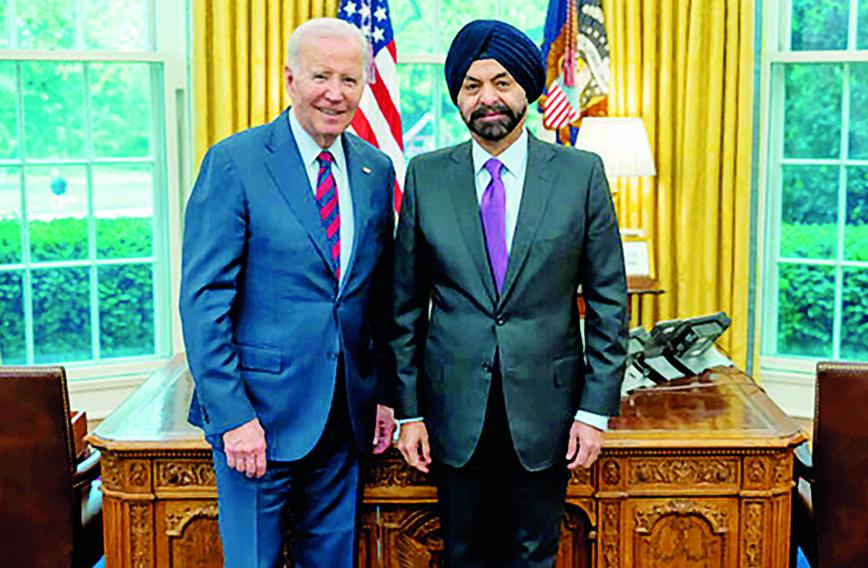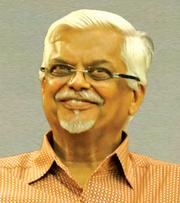

SANJAYA BARU
AJAY Banga made headlines when he was named president of the World Bank by US President Joe Biden. Indian born and mostly educated in India, Banga began his professional career in India before becoming CEO of the American finance firm, Mastercard. Having earned his American credentials, he was green-flagged for the Bank position by the powers that be in Washington.
The World Bank website informs us that: “As the only World Bank Group shareholder that retains veto power over certain changes in the Bank’s structure, the United States plays a unique role in influencing and shaping global development priorities.”
Not surprisingly, therefore, the president of the World Bank has always been a United States national. For a brief while in 2019, a woman temporarily held the fort at the Bank when Kristalina Georgieva of Bulgarian nationality was placed in charge. But then she moved to the International Monetary Fund, taking forward a post-War understanding between the trans-Atlantic allies that the Bank would be led by an American and the Fund by a European.
Even though the Bank did have presidents born outside the US, the first one being German-born Ernest Stern, who only served as acting president in 1995, followed by Australian-born James Wolfensohn, who had a full term from 1995 to 2000, and Jim Yong Kim of South Korea, all of them had acquired US citizenship before being appointed head of the Bank. Indeed, that holds true for Banga as well. While the Indian media has made much of a muchness about Banga being a true ‘desi’ since he was both educated in India and had worked in India before moving to the US, he soon acquired American citizenship.
The fact is that over three-quarters of a century after the end of the Second World War none of the security and economic institutions created by the victors of the War have been dismantled, nor have the trans-Atlantic powers let go of the leadership of these institutions. Be it the United Nations Security Council or the ‘Bretton Woods Sisters’ (Fund and Bank) or indeed the post-War military alliances, they are all still in place. But the Bank is an interesting example of how changes in the structure of the global economy and the Bank’s own business have forced it to accommodate the interests of the so-called ‘Global South’.
The Bank’s initial business was mainly focused on post-War reconstruction in Europe. Which is why it was named the International Bank for Reconstruction and Development. Till the 1970s the Bank’s major clients were European and East Asian countries. Major and powerful developing economies like India remained wary. Indira Gandhi’s experience with the Fund and the Bank in the late 1960s, when she agreed to a devaluation of the rupee in the hope of securing a Bank loan which then did not materialize was a particularly bad episode that strained India’s relations with Washington.
Well into the 2000s the US made sure that senior and trusted Americans, or US allies, retained the leadership of both the Fund and the Bank. The Bank’s tallest leader was perhaps Robert McNamara, who earned ignominy for his role in the Vietnam war as US defence secretary and then atoned for it as head of the Bank, promoting development rather than war. McNamara served at the top of the Bank from 1968 to 1981.
A compelling reason for the US, the World Bank’s largest and dominant shareholder with a veto power, to have picked the name of an Indian American could well be to provide a balance to China’s rising profile through its two financial arms — the Asian Infrastructure Investment Bank and the BRICS New Development Bank, of which China is the biggest shareholder. A more suitable and a more ‘Indian’ finance professional to head the World Bank could easily have been Montek Ahluwalia, Raghuram Rajan, K.V. Kamath or Deepak Parekh. All Indian passport holders. But of course the US would want a US national to head the bank. Banga has been a US citizen since 2007.
The interesting thing today about the World Bank’s lending profile is that India is its biggest borrower. India’s total borrowing from the Bank as of 2022 is estimated to be close to $40 billion. Indonesia at $20 billion comes next followed by Pakistan and Bangladesh with borrowings estimated to be at $18 billion each. Taken together, India and its three closest neighbours — Indonesia, Pakistan and Bangladesh — account for Bank borrowings of close to $100 billion. They are followed at a distance by countries in Africa, Latin America and Eastern Europe.
It was, therefore, a smart thing for the Bank’s largest shareholder to do. Appoint someone with a connect to the region to be able to manage the portfolio. Who better than an Indian, that too a Sikh with US citizenship, to head the Bank. The memory of the World Bank as an American institution, or at least a trans-Atlantic one, is being slowly wiped out as people come to believe that it is a global institution run by globalized professionals.
Sanjaya Baru is a writer and Distinguished Fellow at the United Service Institution of India
Comments
Currently there are no Comments. Be first to write a comment!



